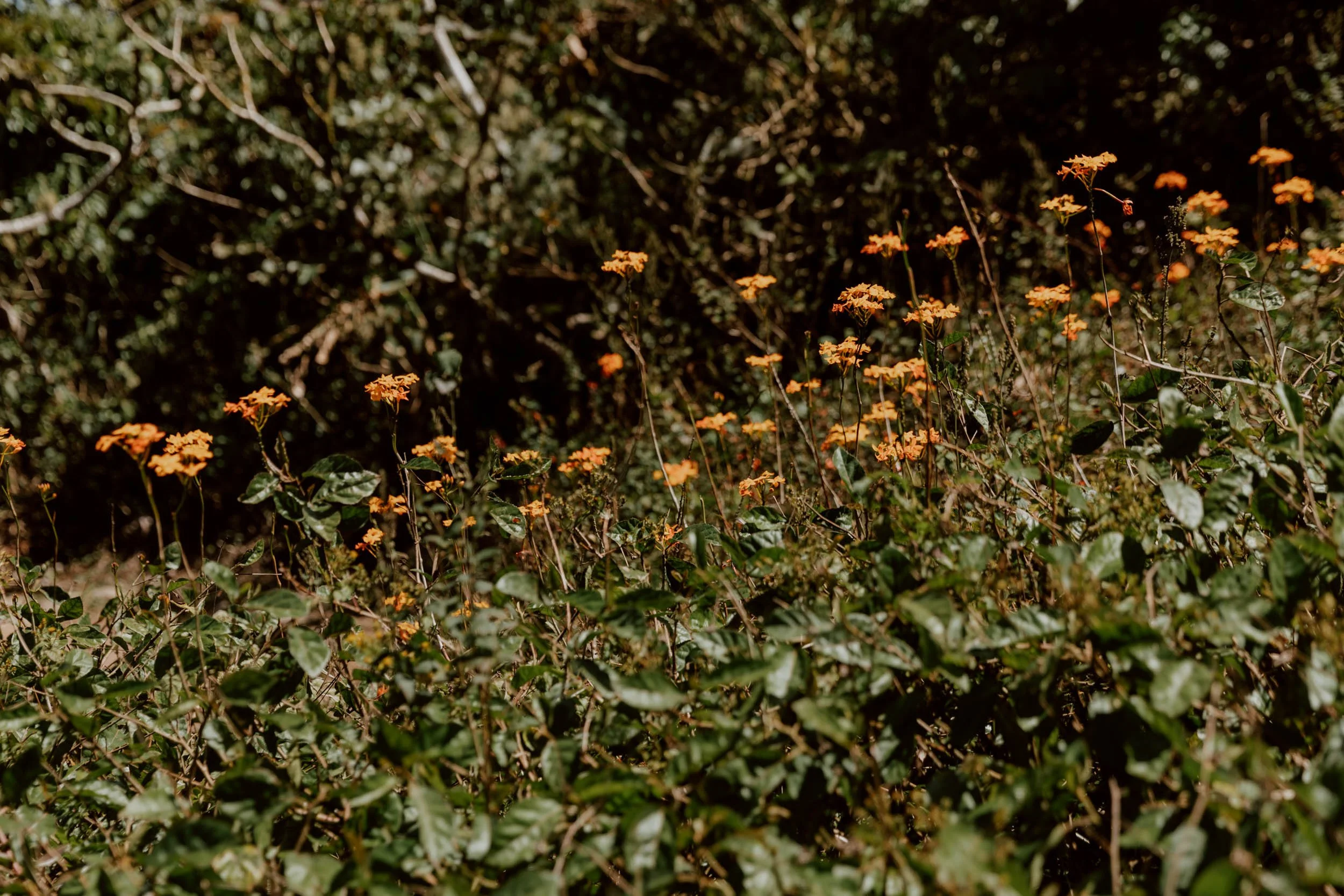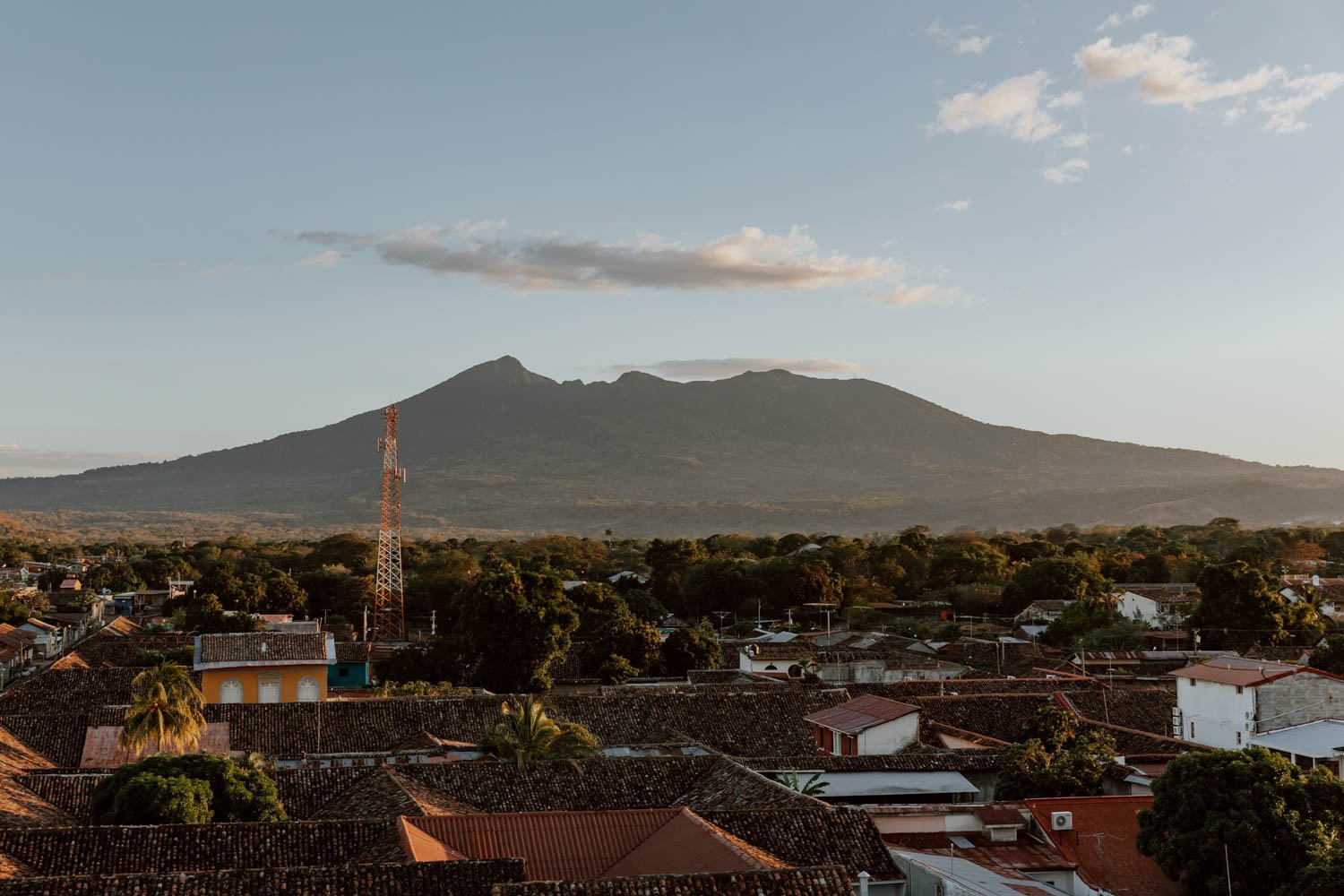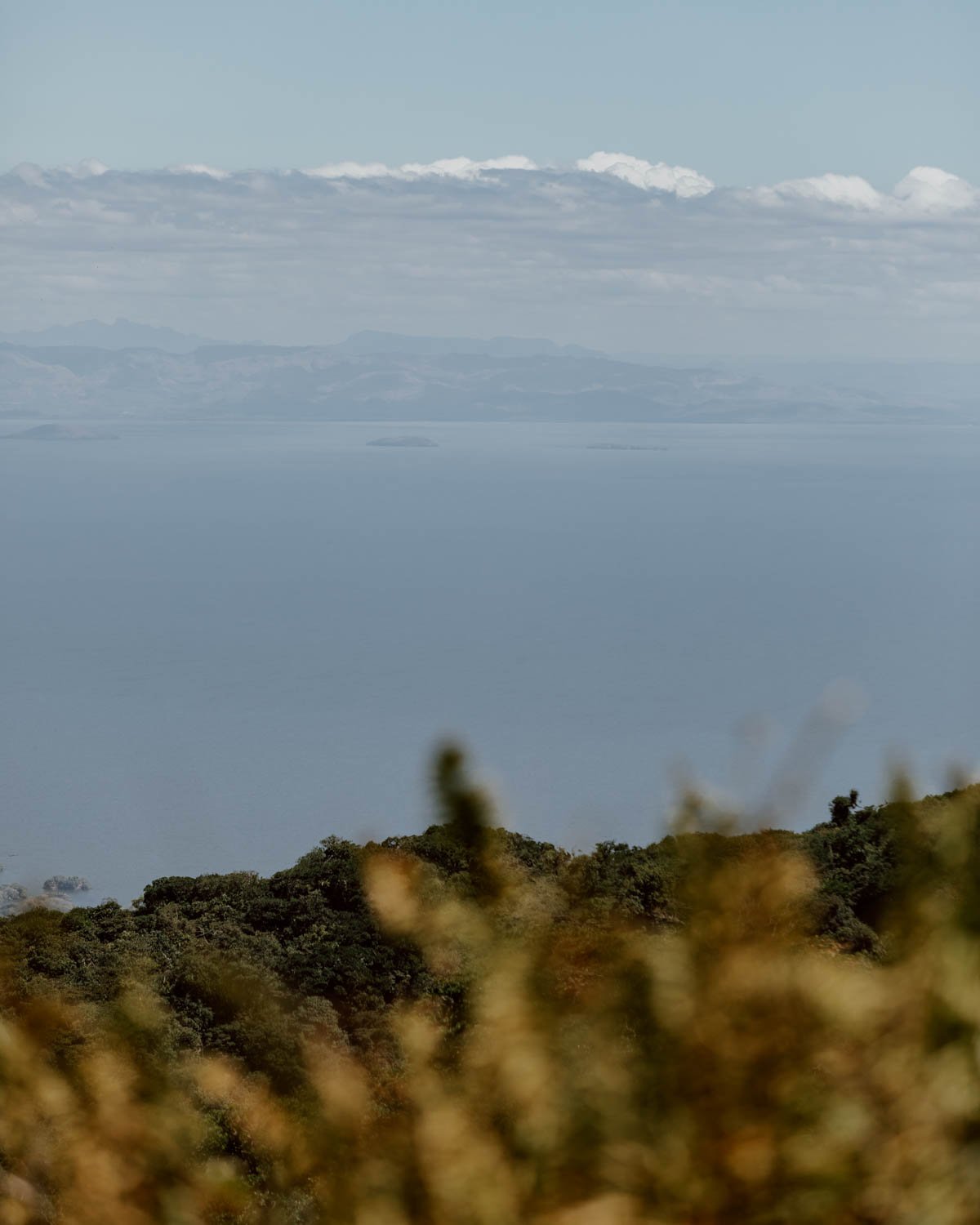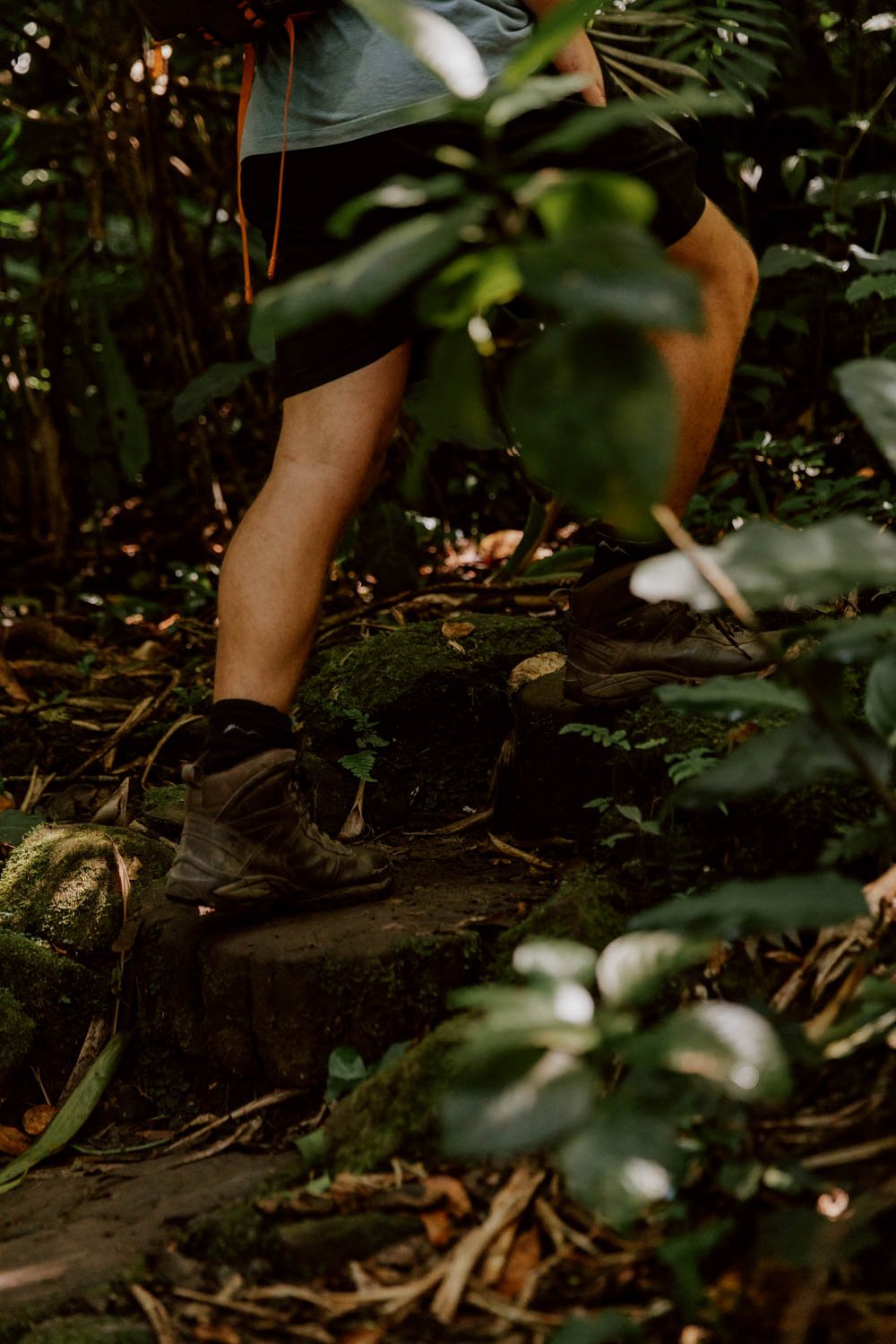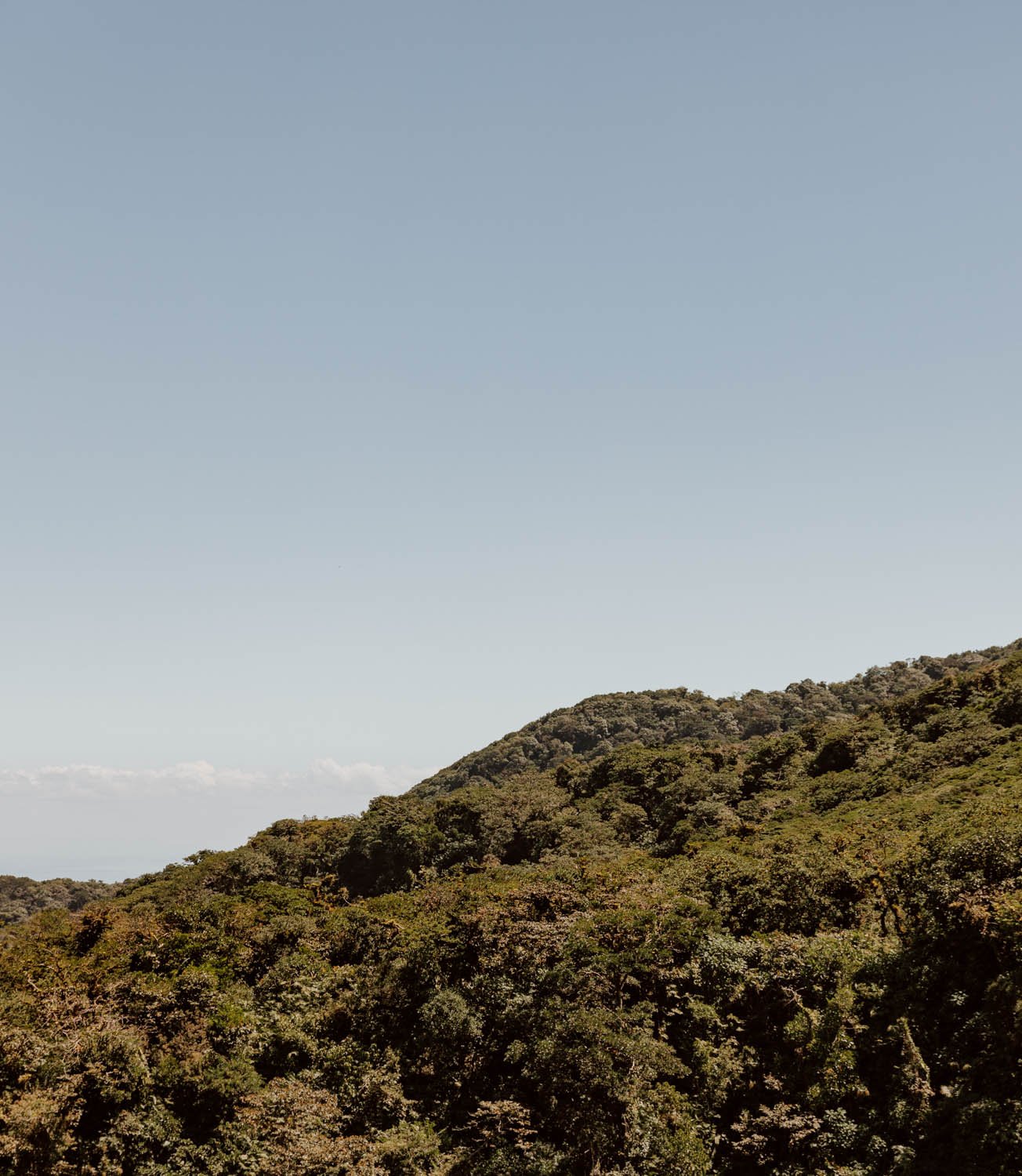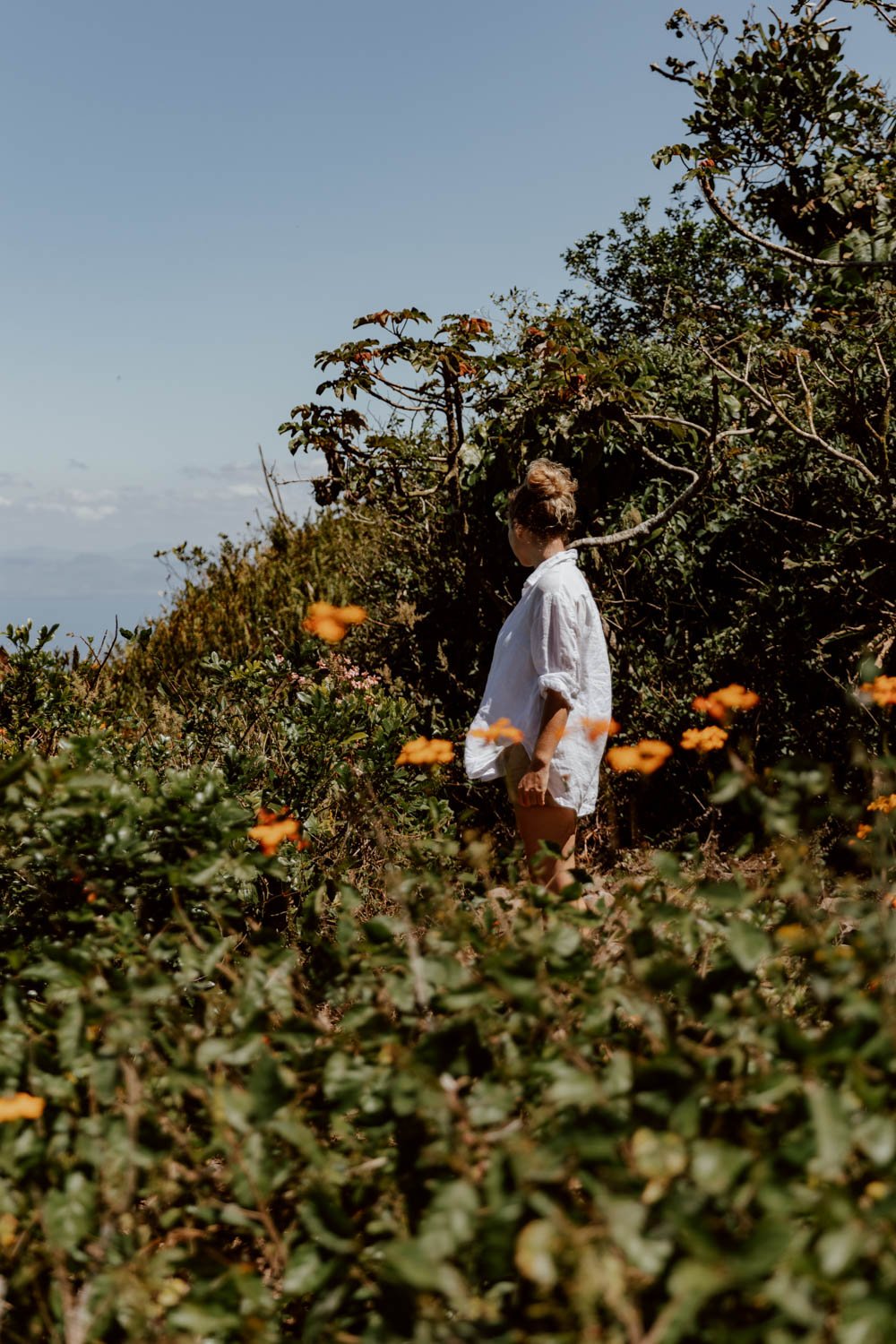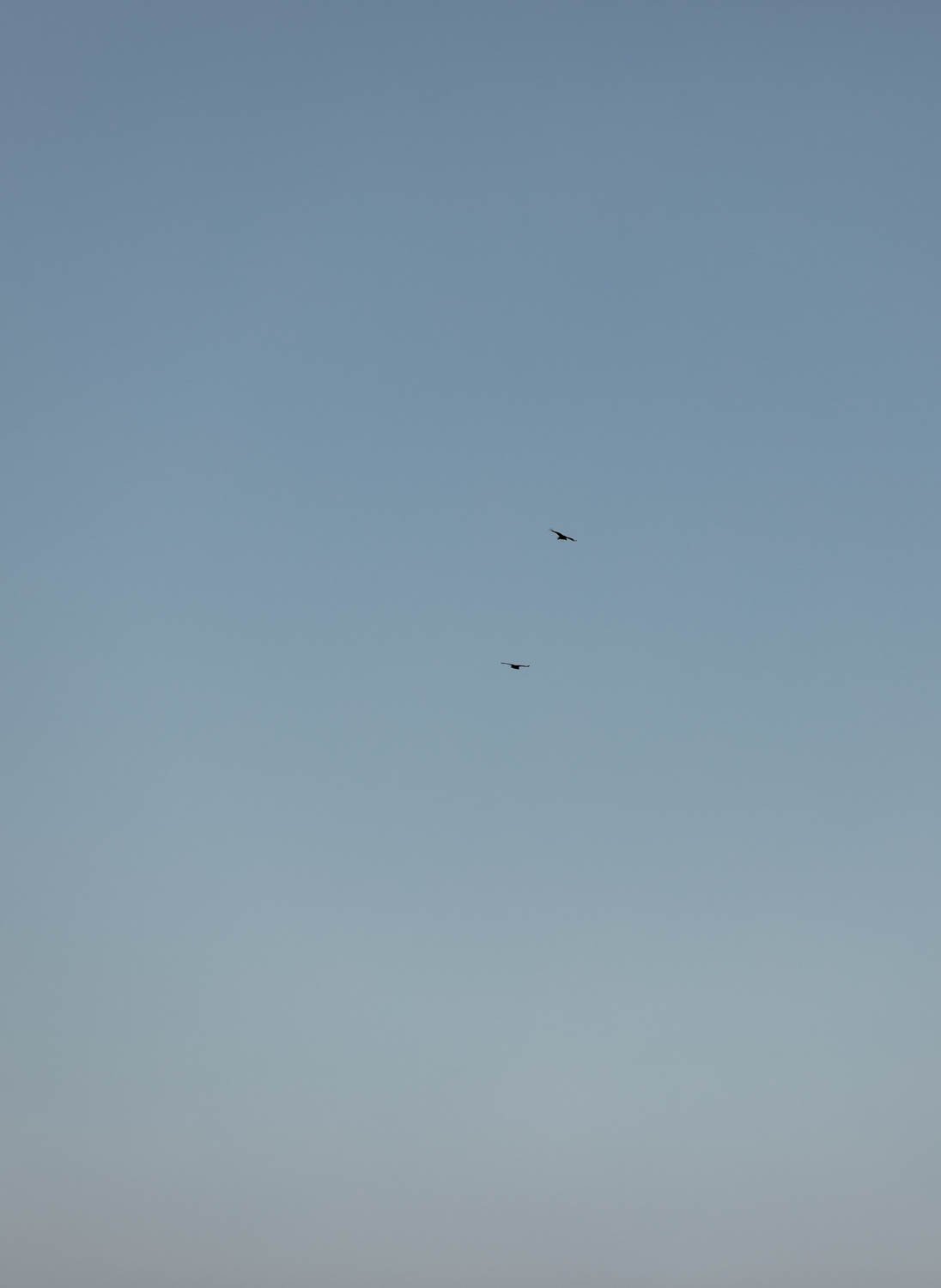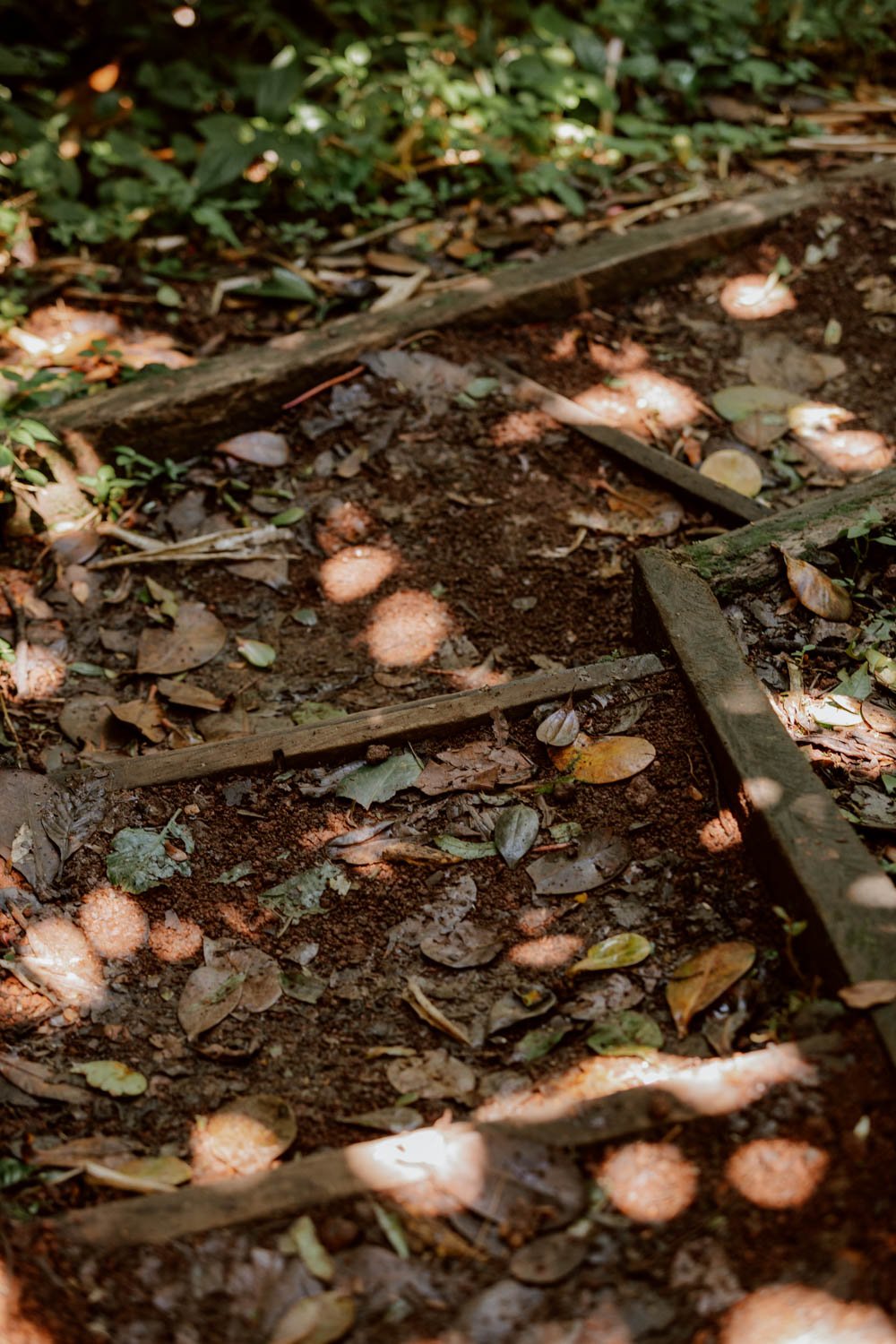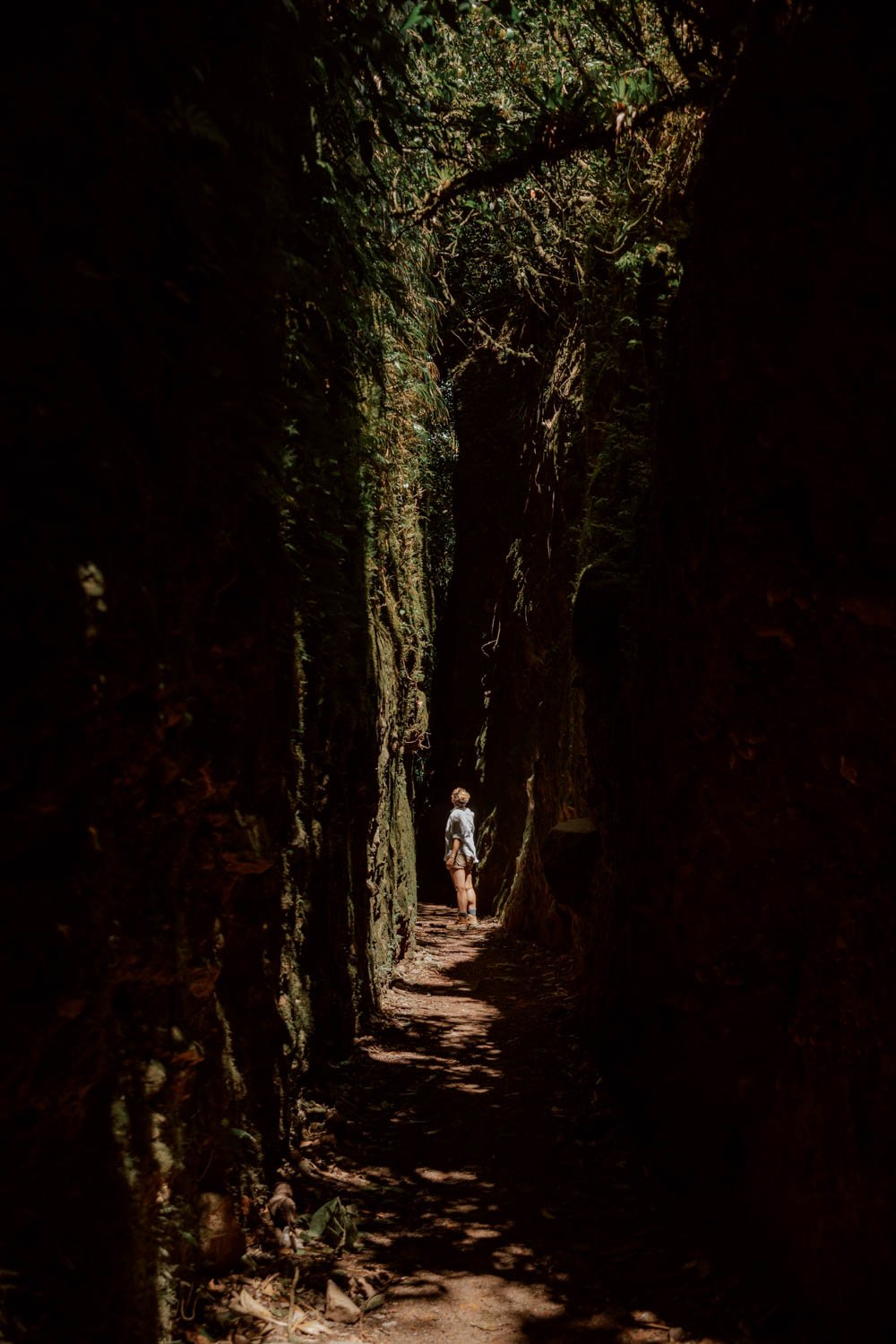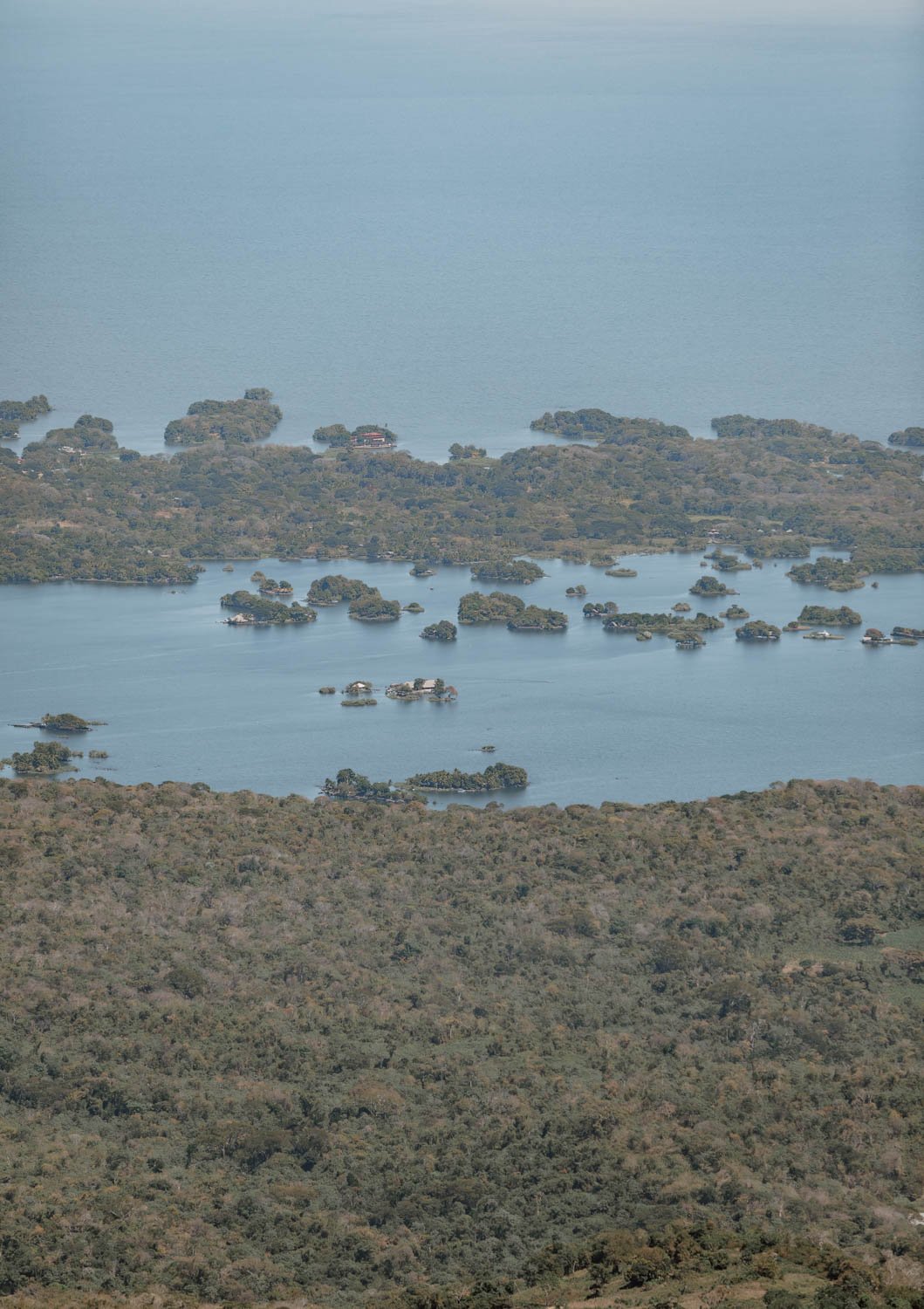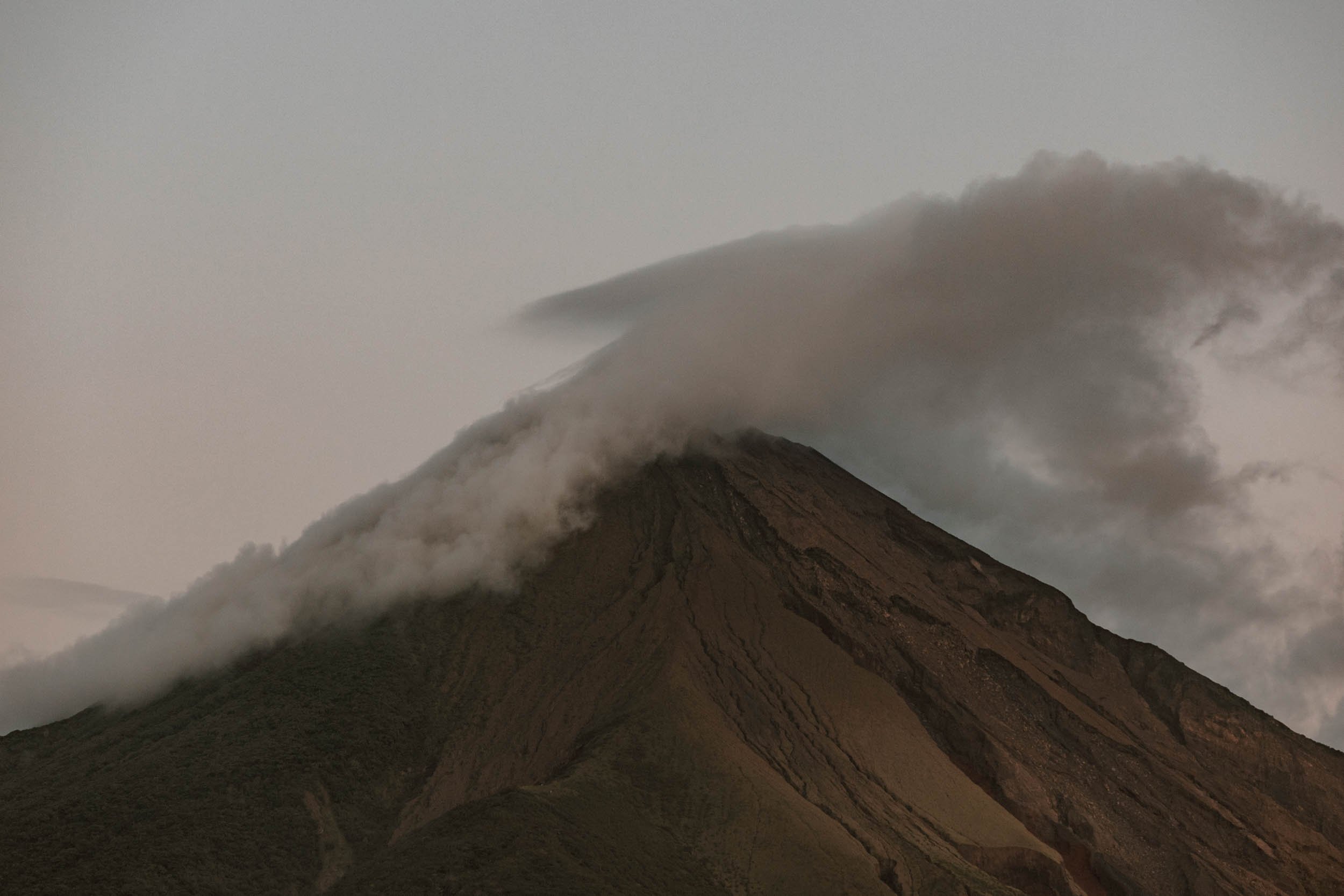Planning a day trip or tour to Volcan Mombacho? Our guide’s got you covered!
It shouldn’t be this easy to forget that you’re on a volcano.
Up here though, there are wildflowers and trees. Birdsong and dew. Whisps of mist and paths to a plateau of semi-permanent springtime overlooking the water.
It’s only when the faint scent of sulphur and smoke chimneys out of a fumarole, an imperceptible toxic fissure in the ground, that the uniqueness of this setting is brought back into focus.
This is a cloud forest within a crater; a forest forged from fire.
Thousands of years ago, Mombacho’s eruption birthed a year’s worth of islands on the largest lake in Central America and laid the foundations for the thriving ecosystem and verdant habitats that have gradually reclaimed the cavity.
Situated 10kms outside Granada, Mombacho is one of several popular volcano-based day trips from the colonial city. It’s either very accessible or quite difficult to access, depending on how you do it, with the option to take transport up to the summit or submit your thighs to the 45-degree slopes. Although the trails, the flora, fauna, and the stellar viewpoints from the rim are the main draw, the presence of an organic coffee finca and ziplines means a day at Mombacho can cover off quite a lot of quintessential Central America experiences.
Indeed, it’s on a par with several nature experiences that neighbouring Costa Rica would charge an arm and a leg for.
In this short guide, we’ve shared everything you need to know to visit Mombacho on a day trip from Granada independently or with a tour. There’s transport, ticket, and trail information, as well as our personal advice on what will be the best sort of experience for your budget or travel style.
Read Later | 13 Wonderful Things To Do in Granada
Volcan Mombacho Essentials
// 1,344 metres (4,409 ft) above sea level
// Last eruption in 16th century.
// A protected Natural Reserve
// Ecologically rich, with several endemic species
// Accessible with public transport
How To Get From Granada To Volcan Mombacho
// A Tour
We did this day trip independently with public transport and a lot of walking, but if you’d prefer the convenience, experience, and knowledge of a guided tour, then check out this highly-rated 5-hour 4WD tour from Granada.
Half-day tours are also offered at most agencies in the city, and we’ve included a few more options at the end of this post which also add on a few hours ziplining.
// By Bus
If travelling independently, you can easily travel to the entrance with public transport from Granada
Firstly, walk or take a 20 cordoba colectivo taxi to this street (maps), where you’ll find the chicken buses for Rivas and Nandaime. Both head south along the same highway, passing the Mombacho entrance / turn-off, so simply get on the next one.
Tell the ayudante you want ‘la entrada de Mombacho’, and pay once the bus has departed Granada. Travel time is about 25 minutes and it should cost 10 cordoba. The driver should give you a shout when you need to disembark, but it’s not a bad idea to keep an eye on the blue dot GPS on Google Maps - our bus actually overshot it by quite a bit!
The entrance road is on the left hand side (here on Google Maps), but you’ll hop off the bus at the other side of the highway. Simply cross over, and there’ll normally be a handful of tuk-tuk drivers offering to take up up to the reception / entrance; it’s a straightforward and easy 20-minute / 1.5 km walk though, so you don’t have to go with them (if you do, it shouldn’t cost more than 30 córdoba but will require a bit of negotiation). Note that the tuk-tuks only take you to the entrance area, not up the hill and to the top of Mombacho!
At the reception and proper ticketed entrance, you’ll find toilets, a simple map, and someone to explain everything to you. From there, you can choose to head on the buses up or do what we (foolishly) did and walk up…
You can find advice on the return journey and costs at the end of the post.
// By Taxi
Alternatively, a private taxi from Granada straight to the entrance will cost you in the region of $15 USD. If you’re lucky, you may be able to find a colectivo (shared) taxi heading to the highway, which will charge you a lot less for a seat (approx. 40-80 córdoba).
Read Later | Five Fantastic Days Trips From Granada
Tickets & Entry for Mombacho
The entrance reception (maps) is open from 8.30am - 4.30pm Monday to Sunday, but we recommend arriving around 8.20am if you want to catch the first shuttle.
You’ll find toilets, a simple map, and a guy explaining everything, whilst it’s also the departure point for the shuttle truck up to the summit of Mombacho and the trails.
There’s a quite bewildering range of ticket prices depending on whether you are local or foreign, walking up or taking the shuttle transport, and which trails you’re planning on exploring. This means the total cost of your day trip to Mombacho can differ by a significant margin depending on your selected transport + trails, so we recommend making a decision on it before you arrive; it also determines what time you should leave Granada.
We’ve summed up the most relevant options and price categories below (all USD & per person):
Foreign Adult Walking | $5
Foreign Adult w/ Transport | $20
4x4 Vehicle Access | $25
El Tigrillo Trail Access | $4
El Puma Trail Access | $6
Crater Trail Access | $2
By way of example, we paid $7 each for 1 x walking entry + Crater trail access. If you prefer to take their shuttle truck up/down and want to walk the Crater trail, it would cost $22 each.
We’ve explained each trail in more detail in the next section, with advice on those you should prioritise, but the next important thing to note at this stage is that both El Tigrillo and El Puma require a guide to escort you and their fee is in addition to these entry fees.
El Tigrillo | $12 in Spanish / $17 in English | Maximum 1-7 people
El Puma | $17 in Spanish / $22 in English | Maximum 1-7 people
El Crater | $8 in Spanish / $12 in English | Maximum 1-10 people (guide is not mandatory)
So, if a single person takes the transport, and walks El Crater independently but El Puma with a guide, the total cost will be $44. It becomes more affordable if more than one person joins the tour.
You can pay entrance fees by card, but guides and any entries paid at the top are cash only.
Should You Walk Or Take Transport To The Top?
This is where Team ADR is a little split.
We love adding hikes or long walks to our day trips when we travel, often feeling that they add more memories and texture to the experience overall (and help us shed some of the beer belly). Sometimes it helps us save on the pennies too. Therefore, walking up to the top of Mombacho was a no-brainer for us.
However, the two-hour hike / 5 km to the top - where the three trails actually start from - was not a fun hike.
From the entrance reception, it’s all up, up, and up with steep switchbacks and a stone/tarmac path for about 90% of it. It’s a 40 to 45-degree angle for large sections. We heard howlers and even saw some amongst the ever present greenery, but this is very much an access road for vehicles up to the trails and Biological station, rather than a dusty road volcano hike that you may be hoping for.
Hard on the knees, interminable, sweaty, and not terribly fun, it’s not the best idea for many of you unless you’re on a budget and reasonably fit.
Our frustration was added to when the much-talked about Cafe Las Flores & Finca Santa Ana about half-way up was shut! The organic coffee farm at 700 metres above sea level offers short tours on the coffee growing process, as well as the chance to drink the goods and have a break in the cafe, but we were told later that it’s sometimes shut Monday to Wednesday.
Walking up also means you have to set off earlier from Granada in order to start before the clawing heat and humidity is at its worse. Importantly, taking the extra time to walk up means you definitely will not have time to do all three trails: the 4-hour El Puma will be impossible unless you arrive early and only do it whilst El Tigrillo would also require an early arrival and not lingering too long on the Crater trail. If walking, you’re required to set off back down by 3pm.
HOWEVER, the problem is that taking the $20 entry w/ transport turns Mombacho from an accessible and affordable day trip into something a little closer to Costa Rica nature-access prices - especially if you’re doing one of the guide-led trails for $17-20.
One option to consider is walking up and then paying $10 per person for the shuttle back down or vice-versa (as we detail in the section at the end of the post, our walk back down was less fun than on the way up).
At time of writing, the shuttle truck schedule is:
Monday to Wednesday | 8.30 and 10.30am departures from entrance | 11.30, 1.30, and 4pm departures from the Biological Station at the summit.
Thursday to Sunday | 8.30, 10am and 1pm | 11.30, 1.30, and 4pm departures from the Biological Station at the summit.
We recommend confirming the departure times from the Biological Station on the day you visit.
The choice is yours - but don’t say we didn’t warn you!
Note that it is possible to take your own vehicle up to the top and park, but only 4x4s are permitted. It costs $25 for the vehicle, in addition to your individual entry fees. Most of the road is paved, save for a short section or two of dusty track, but it’ll be first or second gear all the way up.
The Volcano Mombacho Trails
At the top of Mombacho, you’ll find the small car park, the Biological Centre and information point, some benches, toilets, and a buzzing big red and white aerial. There are also boards with trail information and maps, and all three start up here.
As we had focused (and spent) a lot on nature experiences over the previous three weeks in Costa Rica, we decided to only do one trail during our Mombacho day trip. In hindsight, we may have been better paying over the odds for the shuttle truck so we could also do one of the guided trails, but we don’t have regrets given what we were prioritising at the time.
To help you reach your own decision, we’ve included an overview + the key things to know about each trail.
Crater Trail*
The easiest of the trails, and the only one that doesn’t require a guide. It’s 1.5 kilometres long, and takes between one to two hours depending on speed and photo taking.
Dewy cloud forest, curious moss and creepy storybook trees, a surprising crevice, and lots of wind traps - things you would never think to experience within a crater, and on a par with more expensive forest trails in Costa Rica. When the trail opens out on to the miradors and the plateau - with a totally different landscape, climate, and flora - it was a game-changer for us and elevated going up Mombacho to something to do, to something very worthwhile. Stellar views of the little Granada in the distance, Las Isletas and Lago de Nicaragua, and a vast rural expanse beyond, with a hidden away fumarole (smokehole) to remind you of the unique geo-thermal heat and circumstances responsible for creating all of this lush vegetation on TOP OF A VOLCANO!. On the return trail, there’s also a lookout point of several surrounding volcanoes, including Laguna de Apoyo and the cigar smoke of Masaya.
Note that several of the signs are broken and it can be a bit unclear which path to follow, but just make sure you cover both the cloud forest and plateau.
*Technically Mombacho has four craters, but this is the principal one.
El Tigrillo Trail
This hike continues on from the Crater Trail above to two additional viewpoints, is 2.5 kilometres long and takes around 2.5 hours to complete. You need to pay for a guide to do this hike, as well as the additional entry fee.
Difficulty level is noted as ‘medium’, but we didn’t do it.
El Puma Trail
This is by far the most challenging of the three hikes, though brings you to much lesser visited areas of Mombacho, across bridges and different lookouts, as well as the dwarf forest (still not entirely sure what that is). The trail is 4.5 kilometres long and takes around four hours to complete. You need to pay for a guide to do this hike, as well as an additional entry fee.
Difficulty level is noted as ‘high’.
If you complete El Tigrillo or El Puma, then please share your experience in the comments to let other travellers make a more informed decision!
As we mentioned, the trails you do depends on the time you have, the transport method taken, and your budget. Arrive early enough, and you could complete all three with a guide and a good pace, but arrive at the summit around 11am, and you’ll only have time for two at most. Remember that you have to descend from Biological Centre by 3 pm if walking down! This is a requirement of the centre, not a suggestion. It takes a good 90 minutes for the walk down.
Volcan Mombacho Tours & Ziplines
Those who are shorter on time or understandably would prefer to fit more into your day trip here, should consider a tour from Granada or elsewhere in southern Nicaragua.
Beyond hotel / hostel pick-up, a number of the Mombacho tours include a stop at Finca Santa Ana & Cafe Flores and an hour or two on the ziplines, canopies, and hanging bridges situated about halfway up the volcano! This family-friendly network at Miravalle stretches over 2 kms of cables, 17 platforms and 3 bridges, so would transform this into a more adventurous, adrenaline-fuelled day trip than a hiking one!
Mombacho Xpress and Canopy Tour | Covers a hike, the coffee plantations and the ziplines, with roundtrip Granada transport.
Mombacho Volcano Hike and Ziplining Adventure | Departs from San Juan Del Sur, with all transport, hikes, and ziplines included.
Mombacho Volcano Natural Reserve Adventure with Ziplining and ATV | Departs from a bunch of destinations in Nicaragua, and includes an ATV drive up the volcano.
4WD Tours from Granada | Does not include the ziplines, but is a highly-rated option setting off from Granada.
If you make your way to Mombacho independently, you can organise your own canopy tour with Canopy Tours Miravalle - see their website for further details.
What To Bring
For the walk up and Crater trail, trainers are absolutely fine. If you’ve got hiking boots, feel free to wear them, especially if there’s been rain.
For the other two trails, hiking boots are recommended due to the conditions.
We went up on a quiet Monday in February, which meant the Las Flores Finca & Café half-way up the road to the summit was unexpectedly closed - according to a guide we chatted to, it’s more likely to be open on Fridays, Saturdays, and Sundays. As they grow and roast the coffee on site, we were looking forward to a stop there, and there’s also simple food / snacks available. Unfortunately, we don’t know if the shuttle truck will stop there to let you off or not, though we expect not.
The Biological Station at the top has space for seating inside and a small selection of snacks, but don’t count on it.
Make sure you bring plenty water and food you’ll need if you’re doing the walk up and down, as there’s nothing along the way save for some household tiendas near the entrance reception.
Beyond this, wear comfortable clothing, bring enough money for unexpected transport costs, and slap on the suncream. It’s a lot hotter down in Granada and basically a diffierent climate at the top, so the temperature drops quite a bit and there’s a fierce wind in parts, so bring along an extra layer and it’s not a bad idea to stuff a rain jacket in your daypack.
How To Get Back To Granada
At time of writing, the shuttle truck return schedule from the Biological Station at the summit is:
Monday to Wednesday | 11.30, 1.30, and 4pm departures
Thursday to Sunday | 11.30, 1.30, and 4pm departures from the Biological Station at the summit.
The walk back down follows the same paved road, and its steepness makes it hard on the knees. Factor in about 90 minutes to make it back to the reception entrance, and you can then simply retrace your steps and walk back along the dusty road to the highway, turn right and walk a little further along until you find the blue and yellow bus stop sponsored by Tigo (roughly here on Google Maps).
There, you’ll have buses passing regularly to take you back to Granada as well as colectivo taxis.
However, a tuk-tuk driver offered to take us back to the highway from the entrance reception for $2 USD, and our feet and thighs were beyond tired at this point, so we jumped in. He then offered to take us into Granada for $8, but we knew there were buses passing all the time for 10 córdoba so just asked him to drop us off at the bus stop. As is common in Nicaragua, he insisted that there were no more buses that day but we knew this wasn’t the case. Whilst we were waiting, lots of colectivo taxis stopped to offer a shared lift back to Granada - and we eventually took one for 20 córdoba each (just over $1 USD), an absolute bargain. He dropped us off at the UNO petrol station by the market, rather than at a specific hostel.
Where to Next?
13 Wonderful Things to Do in Granada
Why You Should Visit Laguna de Apoyo
How to Get to Laguna de Apoyo | Without a Shuttle
13 Wonderful Things to Do in Ometepe
Five Fantastic Day Trips From Granada
13 Wonderful Things to Do in Nicaragua
Surf, Sand & Shots | A Traveller’s Guide to San Juan del Sur

